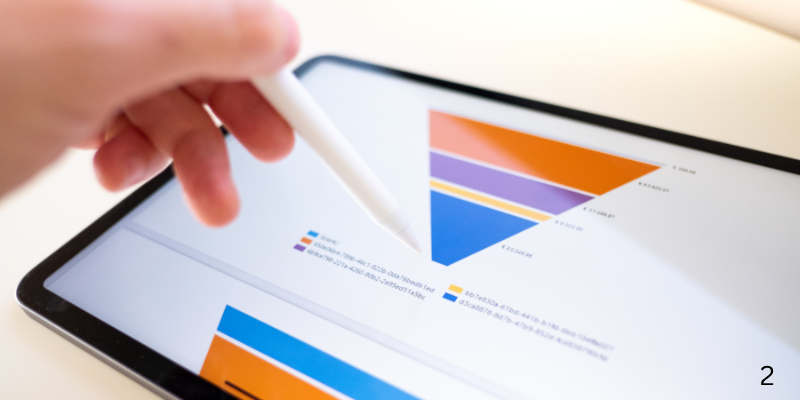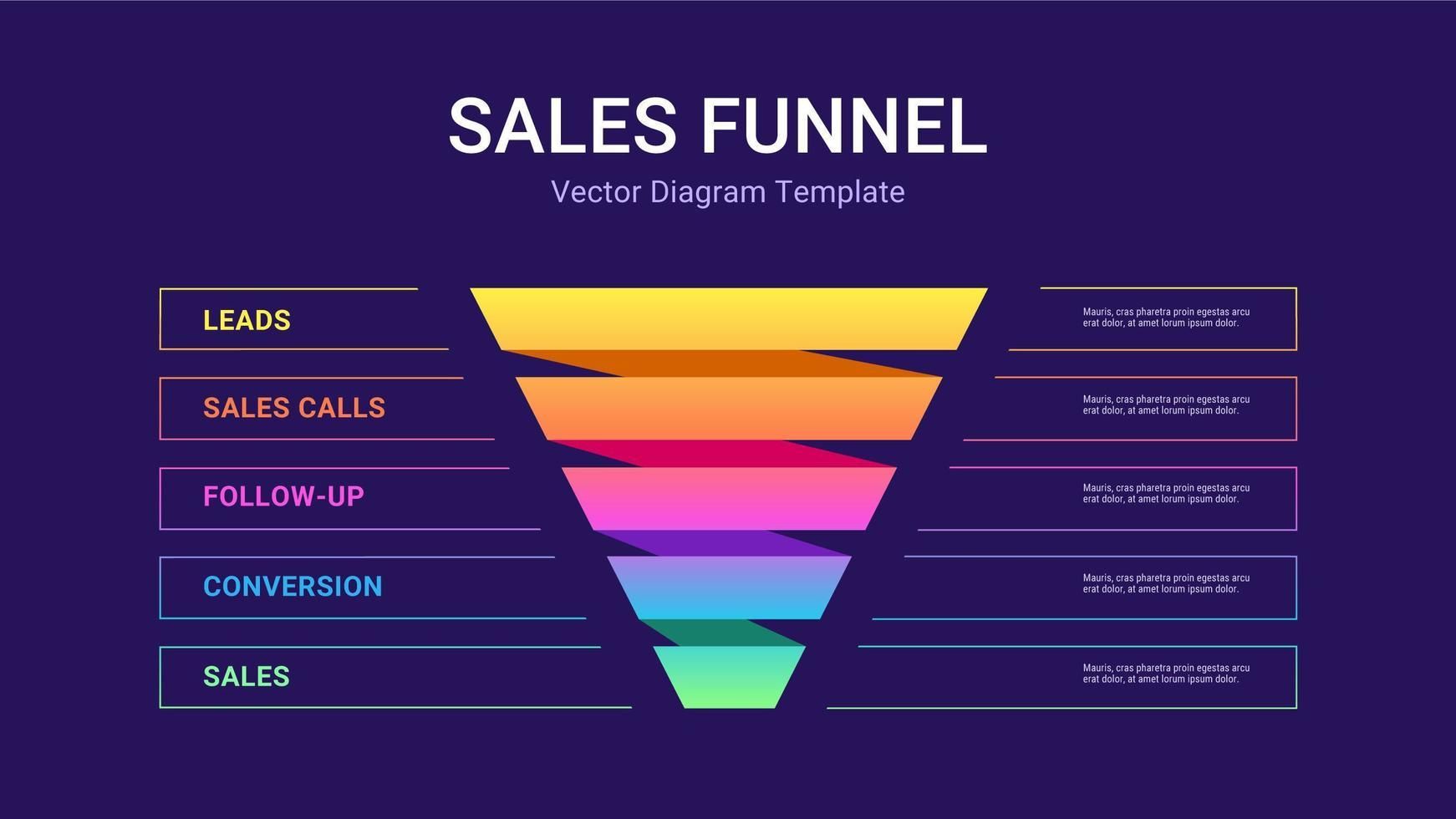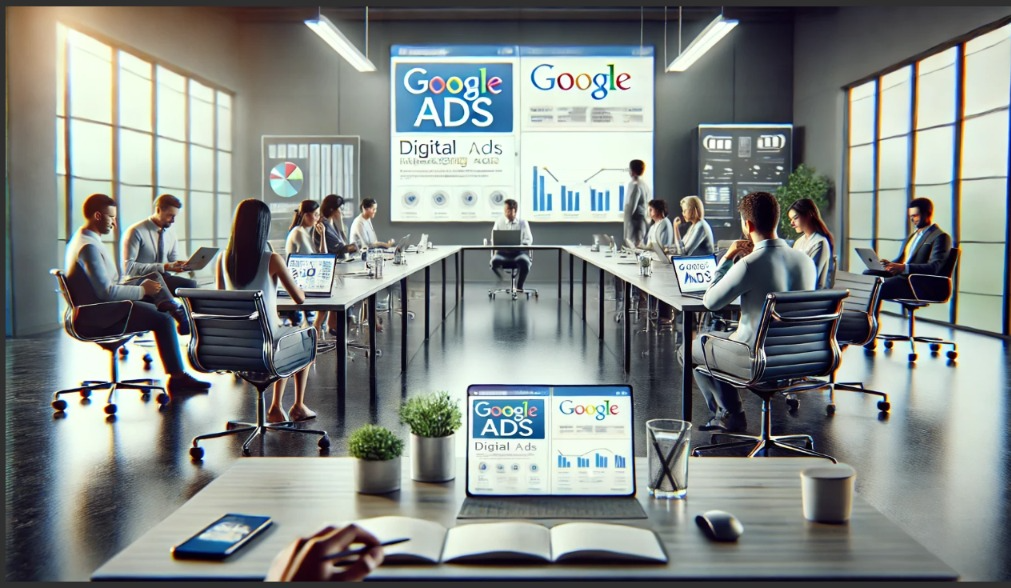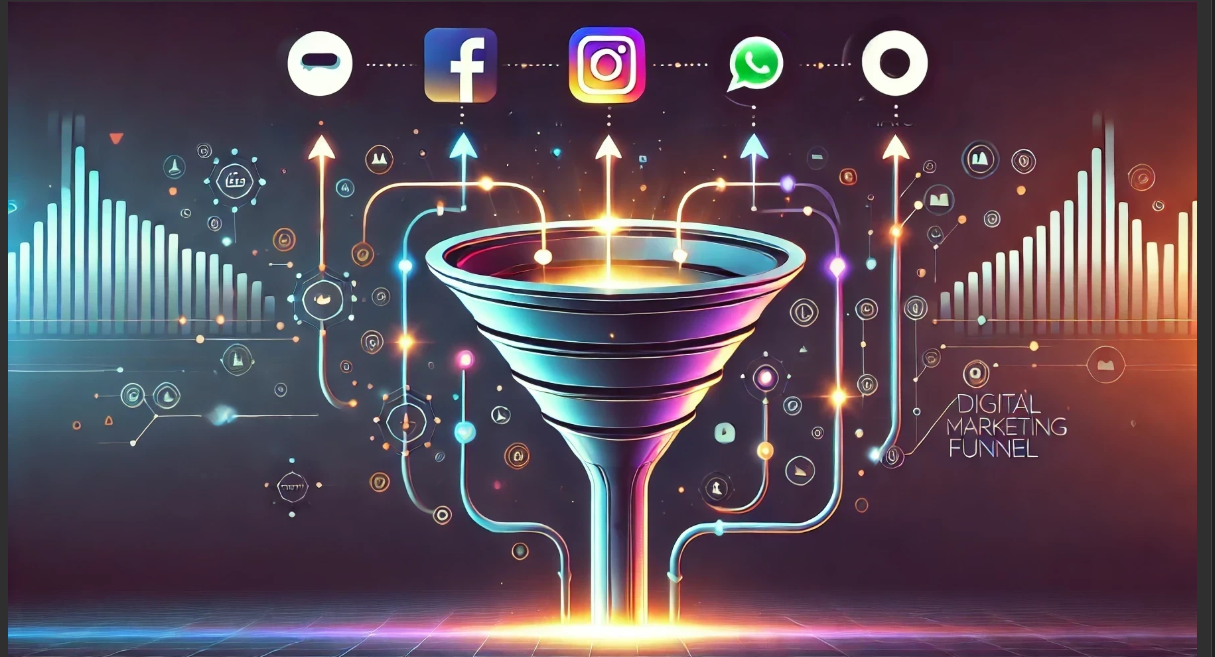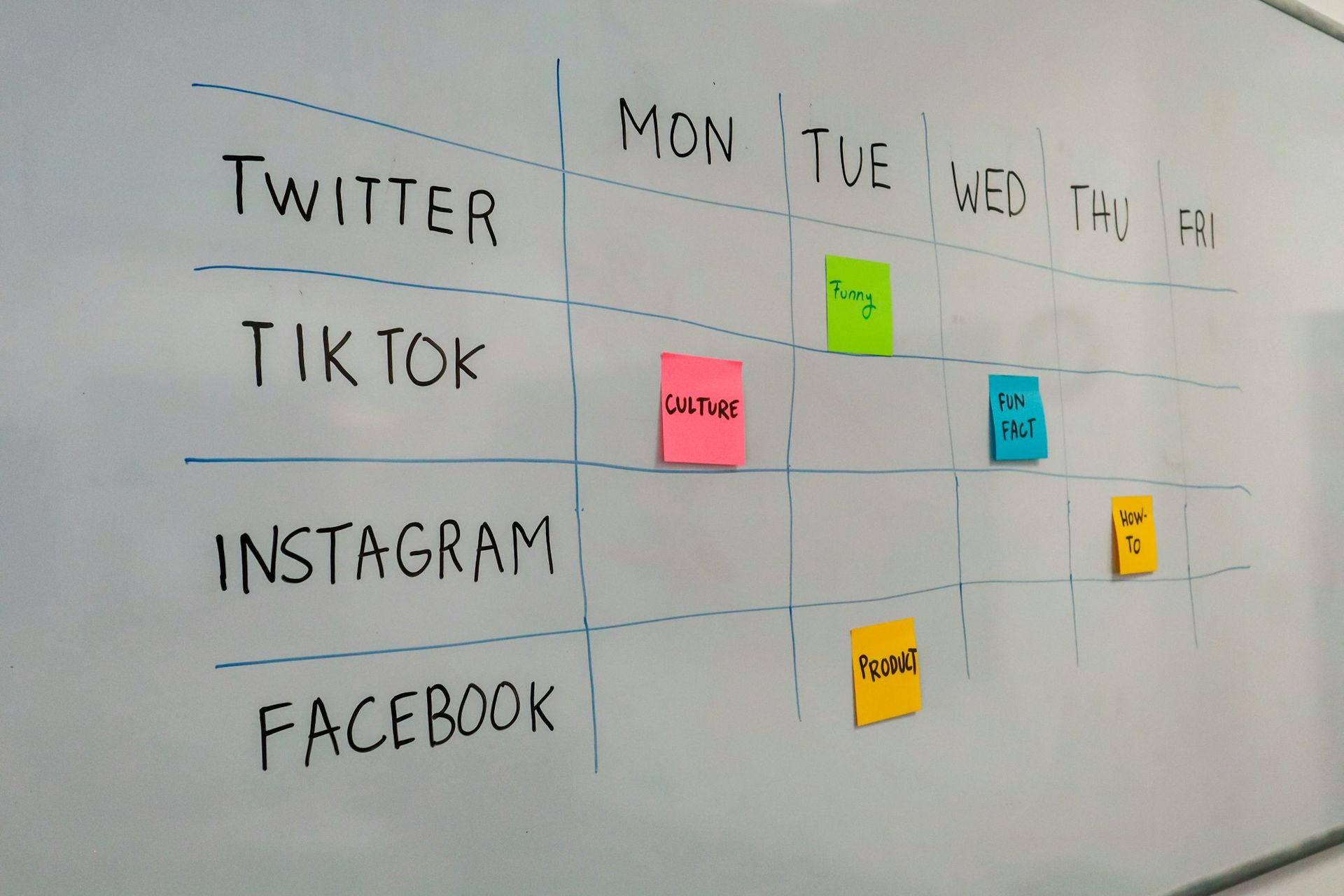Full Funnel Integrated Digital Marketing: The Complete Guide to Maximizing ROI Across Every Customer Touchpoint
What is Full Funnel Integrated Digital Marketing?
Full funnel integrated digital marketing is a comprehensive approach that aligns marketing efforts across every stage of the customer journey, from initial awareness to post-purchase advocacy.
This methodology ensures consistent messaging, optimized touchpoints, and seamless transitions between marketing channels to maximize conversion rates and customer lifetime value.
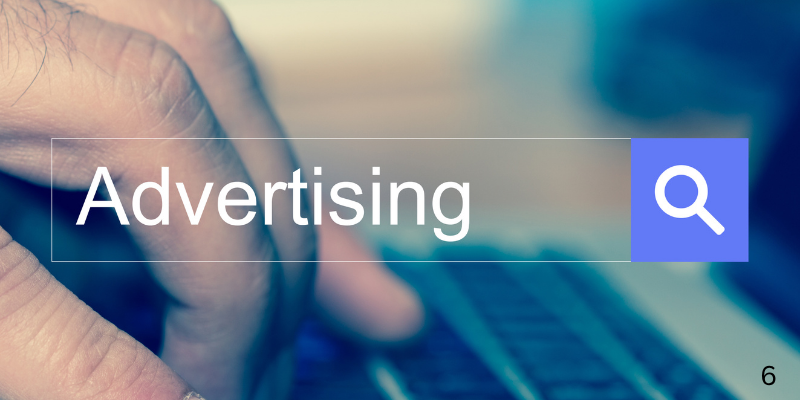
According to recent research by McKinsey & Company, organizations implementing full funnel strategies see 79% higher marketing ROI compared to those focusing on single-stage campaigns.
The integrated approach recognizes that modern consumers interact with brands across multiple touchpoints before making purchase decisions, requiring coordinated efforts across all digital channels.
The core principle of full funnel marketing lies in understanding that each stage of the customer journey serves a distinct purpose and requires tailored content, messaging, and tactics.
Rather than treating marketing channels as isolated efforts, successful brands create cohesive experiences that guide prospects through awareness, consideration, and conversion phases.
Table of Contents
1. What is Full Funnel Integrated Digital Marketing?
2. The Three Stages of the Digital Marketing Funnel
3. Top-of-Funnel (TOFU) Strategies
4. Middle-of-Funnel (MOFU) Tactics
5. Bottom-of-Funnel (BOFU) Conversion Optimization
6. Integration Points and Cross-Channel Coordination
7. Measuring Full Funnel Performance
8. Advanced Attribution Modeling
9. Tools and Technologies for Full Funnel Marketing
10. Common Mistakes and How to Avoid Them
11. Future of Full Funnel Marketing
Key Benefits of Full Funnel Integration:
- Enhanced customer experience through consistent messaging
- Improved attribution accuracy and ROI measurement
- Reduced customer acquisition costs through optimized touchpoints
- Increased conversion rates via strategic funnel progression
- Better resource allocation across marketing channels

The 3 Stages of the Digital Funnel
Awareness Stage (Top-of-Funnel)
The awareness stage focuses on capturing attention from potential customers who may not yet know your brand exists. At this stage, prospects are experiencing a problem or need but haven't identified specific solutions. Content should be educational, broad, and value-driven rather than promotional.
Primary objectives include brand visibility, thought leadership establishment, and initial engagement generation. Success metrics typically focus on reach, impressions, traffic volume, and initial engagement rates rather than direct conversions.
Consideration Stage (Middle-of-Funnel)
During the consideration phase, prospects have identified their problem and are actively researching solutions. They're comparing options, evaluating features, and seeking detailed information to inform their decision-making process. Content becomes more specific and solution-oriented.
The goal shifts from awareness to nurturing qualified leads through educational content that demonstrates expertise and builds trust. Metrics evolve to include lead quality scores, engagement depth, email subscriptions, and content consumption patterns.
Decision Stage (Bottom-of-Funnel)
The decision stage represents prospects ready to make a purchase decision. They've narrowed their options and need final convincing factors such as pricing information, testimonials, demonstrations, or special offers. Content becomes highly targeted and conversion-focused.
Success metrics center on conversion rates, cost per acquisition, revenue attribution, and customer lifetime value projections. The emphasis shifts from education to persuasion and removing final barriers to purchase.
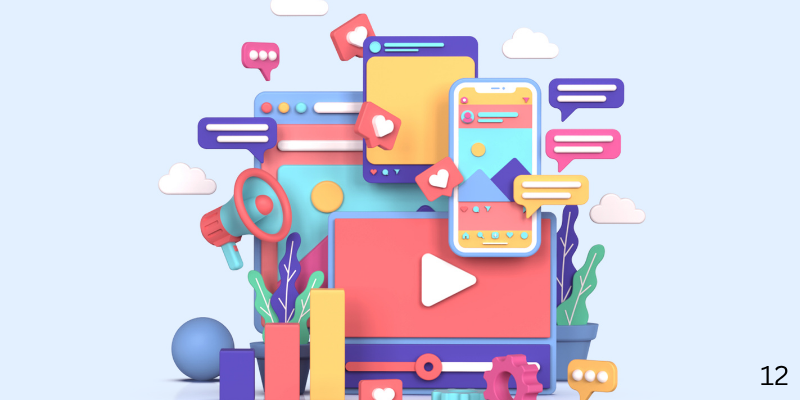
Top-of-Funnel (TOFU) Strategies
Content Marketing Excellence
Creating valuable, educational content that addresses broad industry challenges positions your brand as a trusted resource. Blog posts, whitepapers, and research reports targeting high-volume, low-competition keywords help capture organic search traffic from prospects in the early discovery phase.
Focus on topics that align with your audience's interests but don't necessarily mention your products directly. For example, a project management software company might create content about remote work productivity, team collaboration challenges, or industry-specific workflow optimization.
Social Media Awareness Campaigns
Social media platforms excel at generating brand awareness through both organic and paid strategies. LinkedIn performs exceptionally well for B2B awareness campaigns, while Instagram and TikTok drive consumer brand recognition. The key lies in creating shareable content that resonates with your target audience's interests and challenges.
Video content consistently outperforms static posts across all platforms, with short-form videos showing particularly strong engagement rates. According to Wyzowl's State of Video Marketing Report, 91% of businesses use video as a marketing tool, with 92% of marketers reporting positive ROI from video marketing efforts.
Search Engine Optimization (SEO)
Organic search remains one of the most cost-effective awareness channels when properly executed. Focus on creating comprehensive, authoritative content that targets informational keywords with sufficient search volume. Long-tail keyword strategies often prove more effective than competing for highly competitive head terms.
Technical SEO factors including page speed, mobile optimization, and Core Web Vitals significantly impact search visibility. Google's emphasis on Experience, Expertise, Authoritativeness, and Trustworthiness (E-E-A-T) requires demonstrating subject matter expertise through author credentials, citations, and comprehensive coverage of topics.
Influencer Partnerships
Collaborating with industry influencers and thought leaders can significantly amplify brand awareness efforts. Micro-influencers (1,000-100,000 followers) often deliver higher engagement rates and more authentic connections than macro-influencers, making them particularly valuable for niche B2B markets.
The key to successful influencer partnerships lies in alignment between the influencer's audience and your target market, ensuring authentic integration of your brand message rather than obvious promotional content.
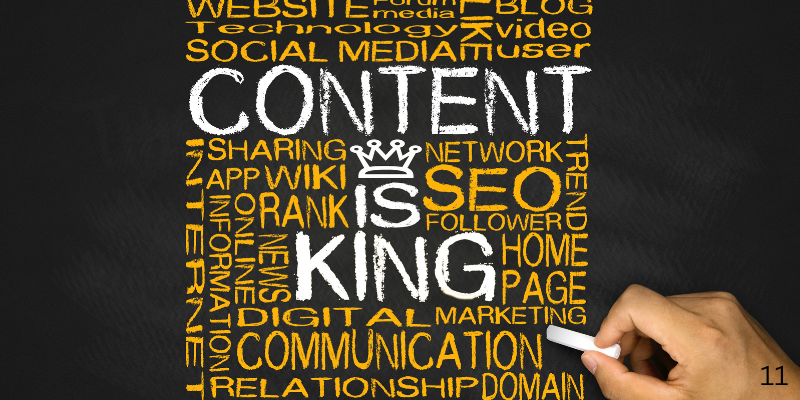
Middle-of-Funnel 'MOFU' Tactics
Lead Nurturing Campaigns
Email marketing remains one of the highest ROI marketing channels, with an average return of $42 for every dollar spent according to the Data & Marketing Association. Effective lead nurturing requires segmentation based on behavior, interests, and funnel stage to deliver personalized content that moves prospects toward purchase decisions.
Automated email sequences triggered by specific actions (content downloads, website visits, webinar attendance) ensure timely, relevant communication without manual intervention. Progressive profiling through forms and surveys gradually builds comprehensive prospect profiles for enhanced personalization.
Retargeting and Remarketing
Display advertising retargeting captures prospects who have shown initial interest but haven't converted. By serving targeted ads across various websites and platforms, brands maintain visibility throughout the consideration phase while prospects evaluate options.
Dynamic remarketing takes this concept further by showing specific products or services that prospects previously viewed, creating personalized ad experiences that increase conversion likelihood. Facebook and Google Ads platforms offer sophisticated audience creation tools for precise targeting based on website behavior, engagement patterns, and lookalike modeling.
Webinars and Educational Events
Interactive content formats like webinars provide opportunities to demonstrate expertise while building relationships with prospects. Live events create urgency and exclusivity while allowing real-time interaction through Q&A sessions and polls.
Recording webinars for on-demand access extends their value and creates additional content for lead generation. Promotion across multiple channels amplifies reach while registration forms capture qualified leads for follow-up campaigns.
Case Studies and Social Proof
Detailed case studies showcasing successful customer outcomes build credibility and trust during the consideration phase. Prospects want to see evidence that your solution works for businesses similar to theirs, making industry-specific case studies particularly valuable.
Customer testimonials, reviews, and user-generated content provide social proof that influences purchase decisions. Video testimonials often carry more weight than written reviews due to their authenticity and emotional connection.
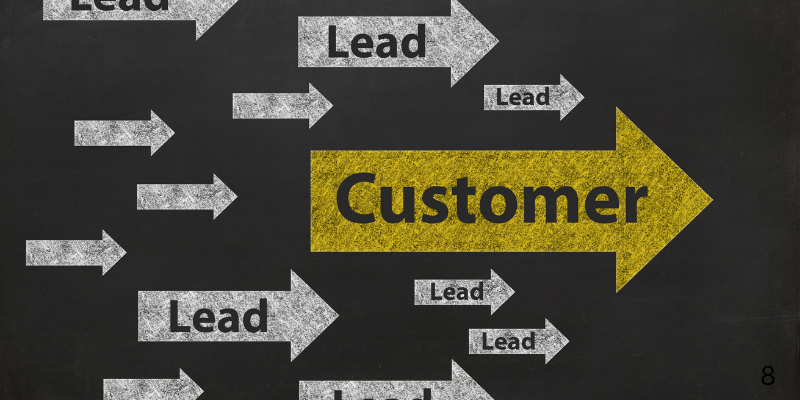
Bottom-of-Funnel 'BOFU' Conversion Optimization
New Landing Page Optimization
High-converting landing pages focus on a single call-to-action (CTA) with minimal distractions. Every element should support the conversion goal, from headlines and copy to images and form fields. A/B testing different variations helps identify the most effective combinations.
Page speed significantly impacts conversion rates, with studies showing that a one-second delay in page load time can reduce conversions by up to 7%. Mobile optimization is equally critical, as mobile traffic accounts for over 50% of web traffic across most industries.
Sales Enablement Integration
aAligning marketing and sales teams ensures smooth transitions from marketing qualified leads (MQLs) to sales qualified leads (SQLs). CRM integration provides sales teams with comprehensive prospect histories, enabling more personalized and effective conversations.
Lead scoring models help prioritize prospects based on engagement levels, demographic fit, and behavioral indicators. Automated notifications alert sales teams when prospects reach predetermined score thresholds or take high-intent actions.
Conversion Rate Optimization (CRO)
Systematic testing and optimization of conversion elements can significantly improve bottom-funnel performance. Beyond landing pages, optimize email campaigns, checkout processes, and form completion rates through continuous testing and iteration.
Heat mapping and user session recording tools provide insights into user behavior, revealing friction points and optimization opportunities. Quantitative data should be combined with qualitative feedback through surveys and user interviews for comprehensive understanding.
Pricing and Promotion Strategies
Strategic pricing and promotional offers can overcome final purchase objections. Limited-time offers create urgency while free trials reduce perceived risk. B2B customers often respond well to ROI calculators and cost-benefit analyses that quantify potential value.
Flexible pricing options, including monthly versus annual billing or tiered service levels, accommodate different customer preferences and budget constraints. Clear pricing communication builds trust and reduces sales cycle length.
Integration Points and Cross-Channel Alignment
Data Unification Strategies
Successful full funnel integration requires centralized data collection and analysis. Customer Data Platforms (CDPs) aggregate data from multiple touchpoints, creating unified customer profiles that inform personalization and targeting decisions across all channels.
First-party data collection becomes increasingly important as third-party cookies phase out. Email subscriptions, account registrations, and preference centers provide valuable data while giving customers control over their information sharing.
Message Consistency Framework
Consistent messaging across all touchpoints reinforces brand identity and value propositions. Develop core messaging frameworks that can be adapted for different channels while maintaining essential brand elements and key messages.
Brand voice and tone guidelines ensure consistent communication regardless of channel or team member creating content. Regular training and approval processes help maintain standards across diverse marketing efforts.
Prioritization Framework
Advanced attribution models provide insights into how different touchpoints contribute to conversions. Multi-touch attribution gives credit to multiple interactions throughout the customer journey rather than only first-touch or last-touch attribution.
Data-driven attribution uses machine learning to analyze conversion paths and assign credit based on actual influence rather than predetermined rules. This approach provides more accurate insights for optimization and budget allocation decisions.
Proven Results Through Consistency
Marketing technology integration eliminates data silos and enables automated workflows across platforms. APIs and native integrations connect different tools while maintaining data accuracy and reducing manual processes.
Regular audits of technology stacks help identify redundancies, gaps, and optimization opportunities. The goal is creating seamless data flow and process automation rather than accumulating multiple point solutions.

Measuring Full Funnel Performance
Key Performance Indicators (KPIs)
Different funnel stages require distinct metrics that align with stage-specific objectives. Top-funnel metrics focus on reach and awareness, middle-funnel metrics emphasize engagement and lead quality, while bottom-funnel metrics center on conversions and revenue.
Top-of-Funnel KPIs
- Brand awareness lift
- Organic search visibility
- Social media reach and engagement
- Website traffic volume and quality
- Content consumption metrics
Middle-of-Funnel KPIs:
- Email engagement rates
- Lead generation volume and quality
- Content download rates
- Webinar attendance and engagement
- Retargeting audience growth
Bottom-of-Funnel KPIs:
- Conversion rates by channel
- Cost per acquisition (CPA)
- Customer lifetime value (CLV)
- Sales cycle length
- Revenue attribution by touchpoint
Advanced Analytics Implementation
Google Analytics 4 provides enhanced cross-device tracking and event-based measurement that better reflects modern customer journeys. Custom dimensions and conversion goals enable detailed analysis of funnel progression and optimization opportunities.
Marketing mix modeling (MMM) and multi-touch attribution platforms provide insights into channel interactions and optimal budget allocation. These tools help quantify the incremental impact of different marketing activities on overall performance.
ROI Calculation Methodologies
Accurate ROI calculation requires comprehensive cost accounting that includes both direct advertising spend and associated labor costs. Customer lifetime value calculations should factor in retention rates, expansion revenue, and referral value for complete picture.
Incrementality testing through holdout groups and geo-lift studies helps isolate the true impact of marketing activities from baseline business performance. This approach provides more accurate ROI measurements for strategic decision-making.

Tools and Technologies for Full Funnel Marketing
Marketing Automation Platforms
Enterprise marketing automation platforms like HubSpot, Marketo, and Pardot provide comprehensive functionality for lead nurturing, scoring, and campaign management. These tools enable sophisticated workflows that guide prospects through funnel stages automatically.
Mid-market solutions including Mailchimp, ActiveCampaign, and ConvertKit offer similar functionality at lower price points, making automation accessible for smaller organizations. The key is selecting platforms that integrate well with existing technology stacks.
Customer Data Platforms (CDPs)
CDPs like Segment, Adobe Real-time CDP, and Salesforce CDP unify customer data from multiple sources, enabling comprehensive customer profiles and advanced segmentation. These platforms support both batch and real-time data processing for immediate personalization opportunities.
Privacy-compliant data collection and processing capabilities help organizations navigate evolving regulations while maintaining marketing effectiveness. Built-in consent management and data governance features reduce compliance risks.
Analytics and Attribution Tools
Google Analytics 4, Adobe Analytics, and specialized attribution platforms like Bizible and Attribution provide detailed insights into customer journey progression and channel performance. Advanced analysis capabilities help identify optimization opportunities and budget reallocation needs.
Heat mapping tools like Hotjar and Crazy Egg reveal user behavior patterns that inform conversion optimization efforts. Session recording and user feedback tools provide qualitative insights that complement quantitative analytics data.
Content Management Systems
Modern CMS platforms like WordPress, HubSpot CMS, and Webflow support advanced SEO features, personalization capabilities, and marketing automation integration. Headless CMS solutions enable content distribution across multiple channels while maintaining centralized management.
Built-in A/B testing, conversion tracking, and lead capture functionality streamline optimization efforts while reducing technical complexity. Mobile-responsive design capabilities ensure consistent experiences across all devices.
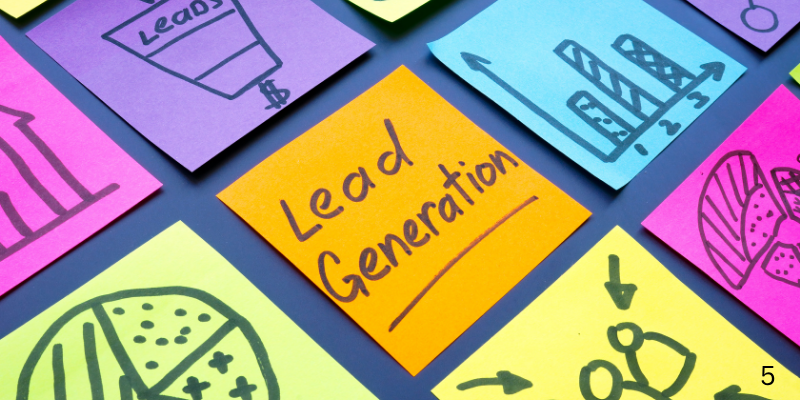
Common Mistakes and How to Avoid Them
Siloed Channel Management
Many organizations manage marketing channels independently, leading to inconsistent messaging, duplicated efforts, and suboptimal resource allocation. This approach fails to leverage synergies between channels and creates disjointed customer experiences
Solution - Implement cross-functional teams with representatives from different marketing disciplines. Regular communication and shared KPIs ensure alignment while maintaining channel-specific expertise.
Inadequate Attribution Modeling
Last-click attribution significantly undervalues top and middle-funnel activities, leading to budget shifts toward bottom-funnel tactics that may not be sustainable long-term. This myopic approach can harm overall marketing effectiveness.
Solution - Implement multi-touch attribution models that recognize the contribution of all touchpoints. Supplement quantitative attribution with qualitative insights from customer surveys and sales team feedback.
Lack of Testing and Optimization
Many marketers implement full funnel strategies without systematic testing and optimization processes. This approach leads to missed opportunities for improvement and continued investment in suboptimal tactics.
Solution - Establish regular testing schedules for different funnel stages and channels. Document results and implement learnings systematically rather than running isolated experiments.
Insufficient Technology Integration
Disconnected marketing tools create data silos that prevent comprehensive customer journey analysis and automated workflow implementation. Manual data transfer processes are time-intensive and error-prone.
Solution - Audit existing technology stacks and prioritize integration opportunities with highest impact. Invest in platforms with strong API capabilities and native integrations with key tools.

Future of Full Funnel Marketing
Artificial Intelligence and Machine Learning
AI-powered marketing platforms increasingly handle campaign optimization, audience targeting, and content personalization automatically. Machine learning algorithms analyze vast datasets to identify patterns and opportunities that humans might miss.
Predictive analytics help marketers anticipate customer behavior and optimize touchpoints proactively rather than reactively. Natural language processing enables automated content creation and personalization at scale.
Privacy-First Marketing Strategies
Increasing privacy regulations and the deprecation of third-party cookies require fundamental shifts in data collection and targeting strategies. First-party data becomes more valuable while consent management becomes more complex.
Contextual advertising and privacy-preserving technologies like differential privacy enable continued personalization while respecting user privacy preferences. Organizations must balance marketing effectiveness with privacy compliance.
Omnichannel Experience Integration
The distinction between digital and physical touchpoints continues to blur as customers expect seamless experiences across all interaction points. Integrated inventory management, customer service, and marketing create unified brand experiences.
Voice commerce, augmented reality, and Internet of Things (IoT) devices create new touchpoints that must be integrated into full funnel strategies. The challenge lies in maintaining consistency across an expanding array of interaction points.
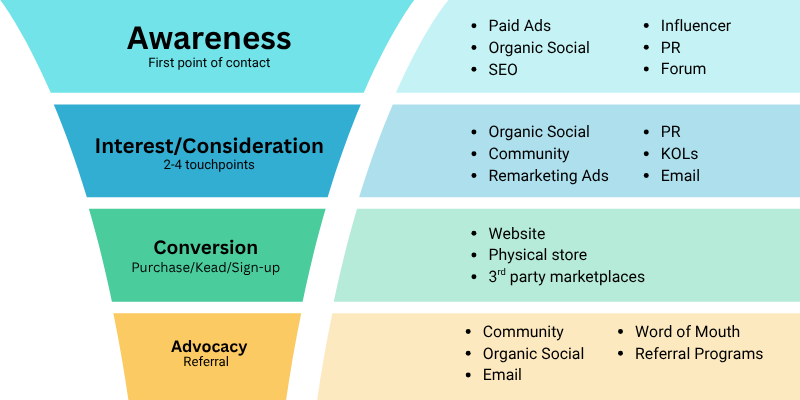
Frequently Asked Questions
What is the difference between full funnel marketing and traditional marketing approaches?
Full funnel marketing takes a holistic view of the entire customer journey, coordinating efforts across all stages from awareness to advocacy. Traditional approaches often focus on individual channels or stages independently, leading to inefficiencies and inconsistent customer experiences. The integrated approach optimizes for overall customer lifetime value rather than single-stage metrics.
How long does it take to see results from full funnel marketing implementation?
Results vary by industry and implementation complexity, but most organizations see initial improvements within 3-6 months. Top-funnel activities like SEO and content marketing may take 6-12 months to show full impact, while bottom-funnel optimizations can show results within weeks. The key is setting appropriate expectations for different funnel stages and maintaining consistent implementation.
What budget allocation should I use across funnel stages?
Budget allocation depends on business maturity, growth stage, and industry characteristics. A common starting point is 40% top-funnel, 35% middle-funnel, and 25% bottom-funnel, but this should be adjusted based on performance data and business objectives. Newer companies might invest more heavily in awareness, while established brands might focus on conversion optimization.
How do I measure the success of cross-channel integration?
Success metrics include improved customer journey progression rates, increased conversion rates, reduced customer acquisition costs, and higher customer lifetime value. Cross-channel attribution models help quantify the impact of channel interactions while customer experience surveys provide qualitative feedback on integration effectiveness.
What are the most common technology requirements for full funnel marketing?
Essential technologies include marketing automation platforms, customer relationship management (CRM) systems, analytics tools, and customer data platforms (CDPs). The specific requirements depend on business size and complexity, but the key is ensuring seamless data flow and integration between different systems.
How does full funnel marketing work for B2B versus B2C companies?
B2B full funnel marketing typically involves longer sales cycles, more touchpoints, and multiple decision-makers. Content tends to be more educational and relationship-focused. B2C approaches often emphasize emotional connection, social proof, and simplified purchase processes. However, both benefit from consistent messaging and integrated channel strategies.
What skills should my team have for successful full funnel marketing?
Teams need a combination of analytical, creative, and technical skills. Key competencies include data analysis, content creation, marketing automation, customer experience design, and project management. Cross-functional collaboration skills are essential as full funnel marketing requires coordination across multiple disciplines.
If you feel that you can use additional support in your full funnel campaigns, reach out to Meta Marketing today.











